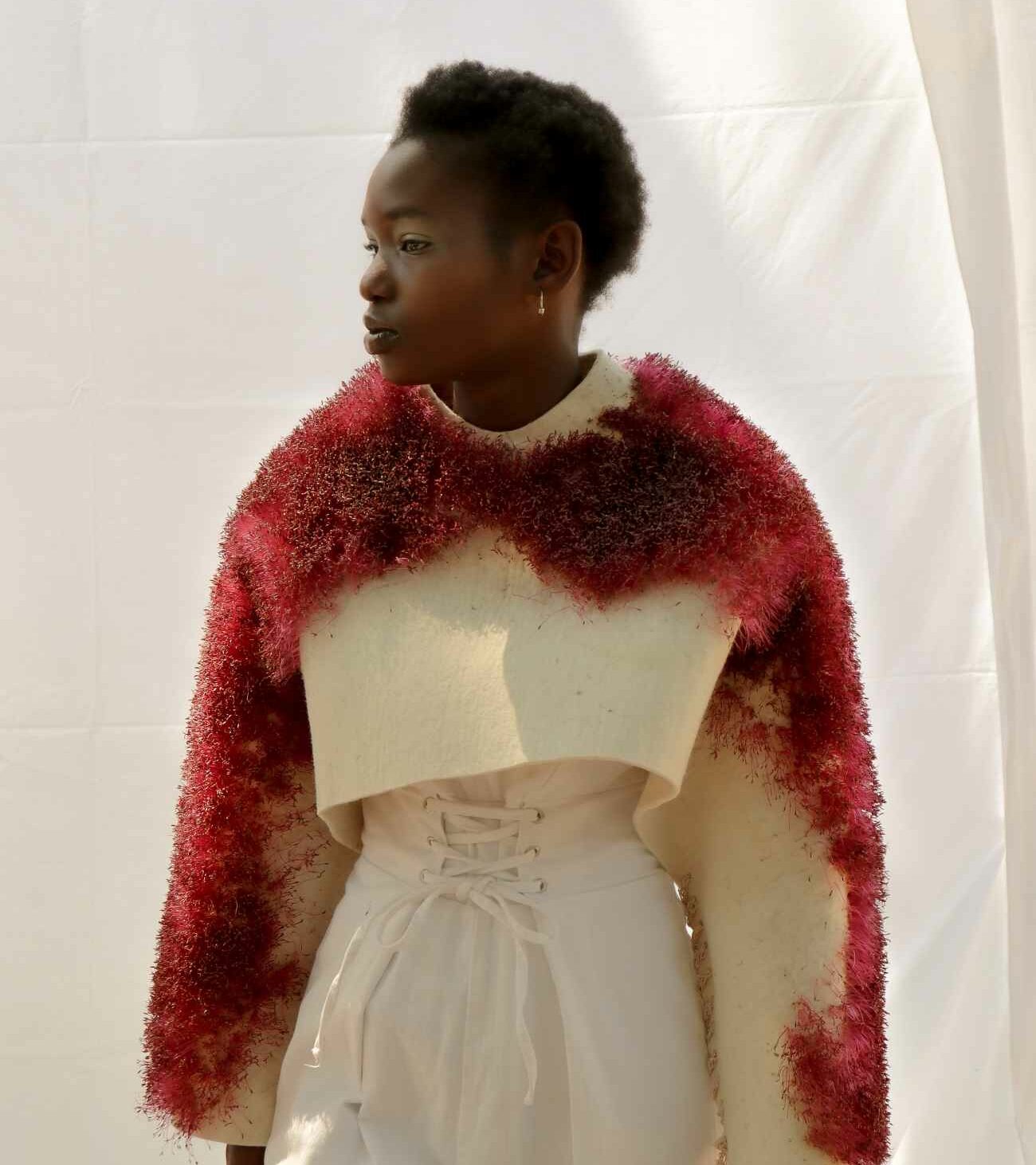
Siamese skins. Two natures. One body.
The intersection between fashion and microbiology illustrate how natural fibres, fashion design and expertise on plants health can embed fashion into nature. Meet young talent Paula Ulargui, the fashion designer whose garments thrive with plants.
In conversation with Paula Ulargui, the Madrid-based fashion graduate tells Luxiders about her final project Siamese Skins. Two Natures. One Body. and how it explores the reconnection between humans and nature. Paula’s work, as the name suggests, thwarts the common, self-centred understanding of humans as separate from nature, and reconciles the toxic relation that we currently hold to the environment. The project is an idyllic vision of a symbiosis between fashion and natural processes, and the harmonious coexistence of humans at the axis of these two.
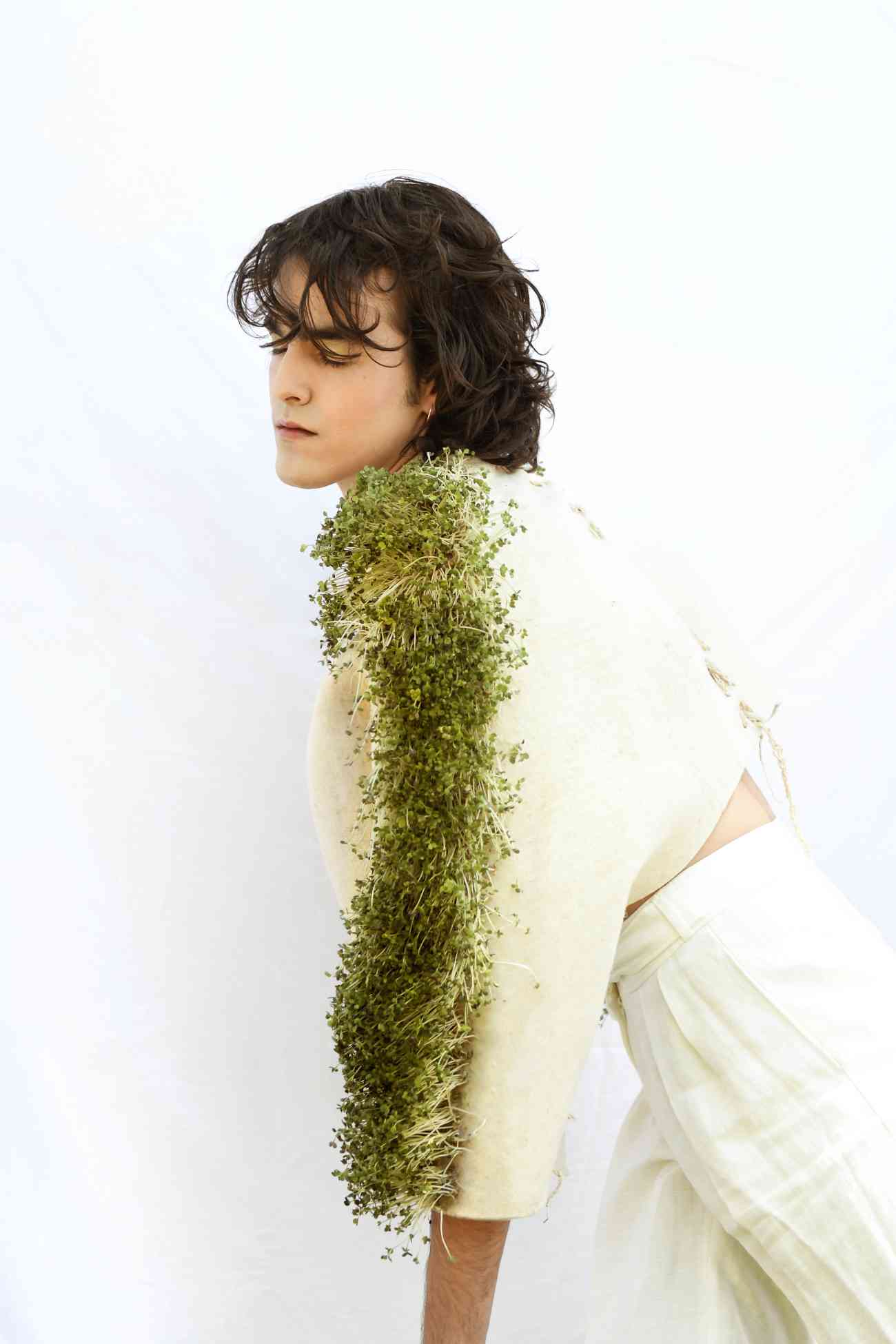
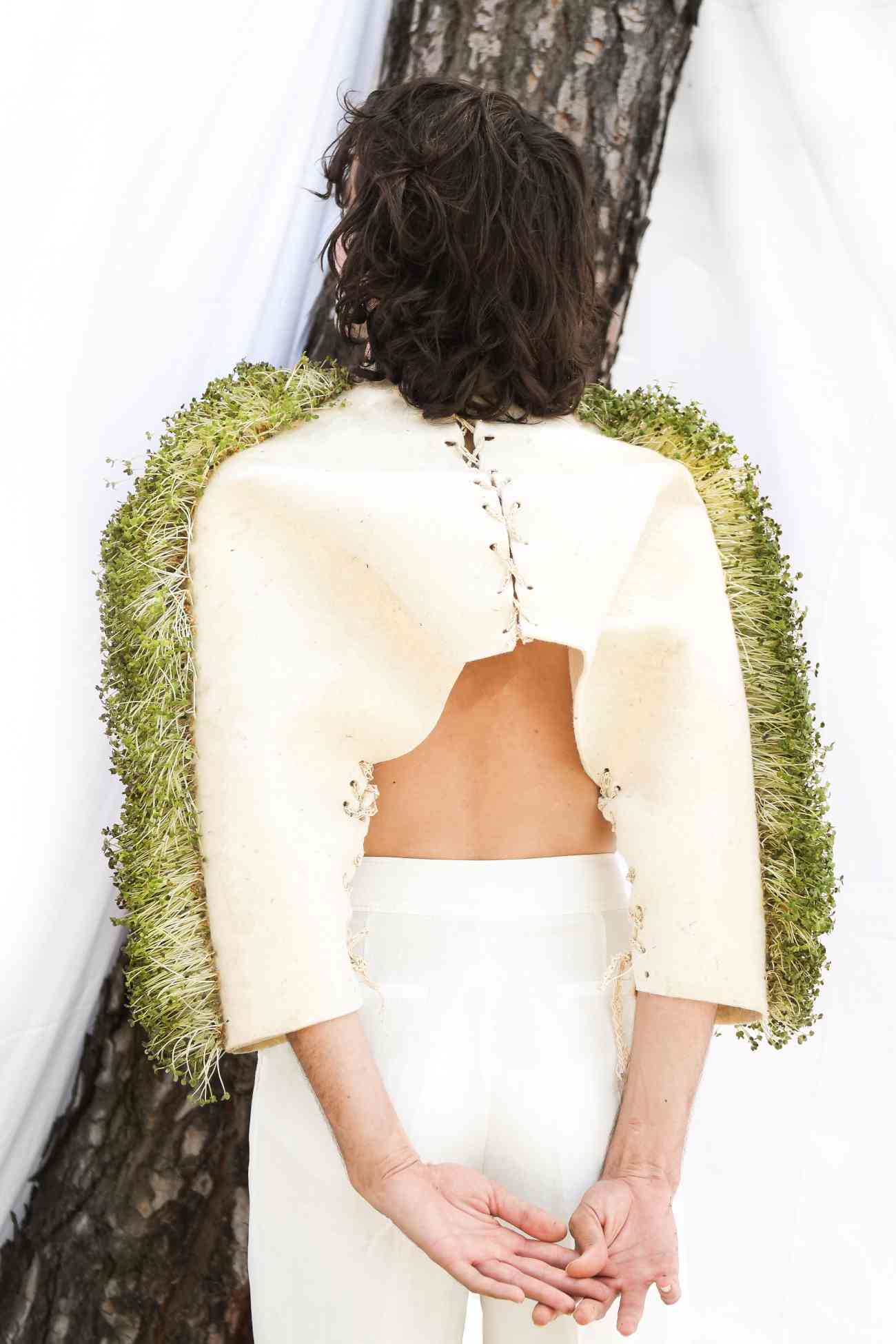
Hi Paula, how are you? Let’s talk about Pieles siamesas. Dos naturalezas. Un cuerpo. How did you come up with this idea – entwining microbiology and fashion doesn’t seem to be an easy task?
For many years I have been researching and pursuing ways to incorporate sustainable values into my work. I came up with the idea for this project during a talk I attended on the “Anthropocene Era,” a concept created in the 2000 to refer to the current geological era, marked by ecological damage as a result of human action. That’s when I realised that my work was somehow related to the restoration of our planet. Clothing can be used as a tool to reconnect humans and nature; a tool to create awareness on today’s fashion industry; a tool to make fashion more balanced – and sustainable.

What techniques and processes have you followed to create these garments? And what’s the longevity of the garments, I mean – the plants?
During the first months I focused on learning and understanding the life cycle of plants and their needs. I tested more than 20 types of seeds in more than 10 types of natural fibres and textile formats. I analysed and studied their needs for light, temperature, water and, overall, their life cycle. This period was the longest and most complex but, without a doubt, the most beautiful.
“Some plants needed so much care that
I spent hours in the studio watching
them grow.”
Once I knew what seeds showed better results, I delved into the aesthetic part of the project. I selected the most visually appealing plants based on their colour. The most difficult thing was to learn how to keep these plants alive for as long as possible. So I had to do a study on different fabrics with their respective thickness and patterns to create garments that were strong enough for the seeds to grow and live.
The clothing pieces are easily assembled and disassembled making it possible for us to take care of the plants, to water them when they are not being worn. If cared of properly, these garments can live and be worn for weeks. I’ve managed to keep one of the garments alive for about two months, it all depends on the environment and the season.
One of my wishes is to keep researching in the future to improve the technique and to extend the life of these clothes.

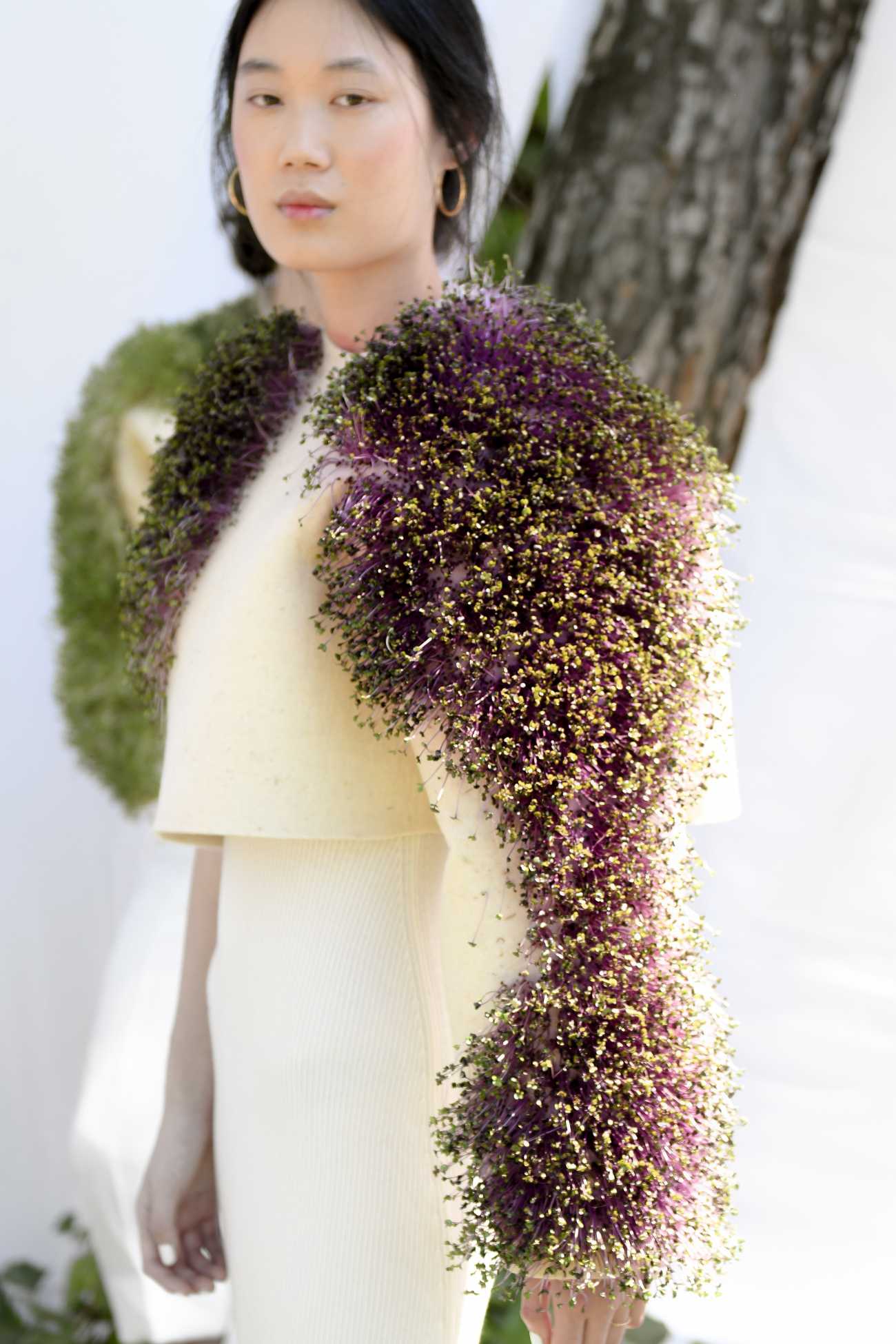
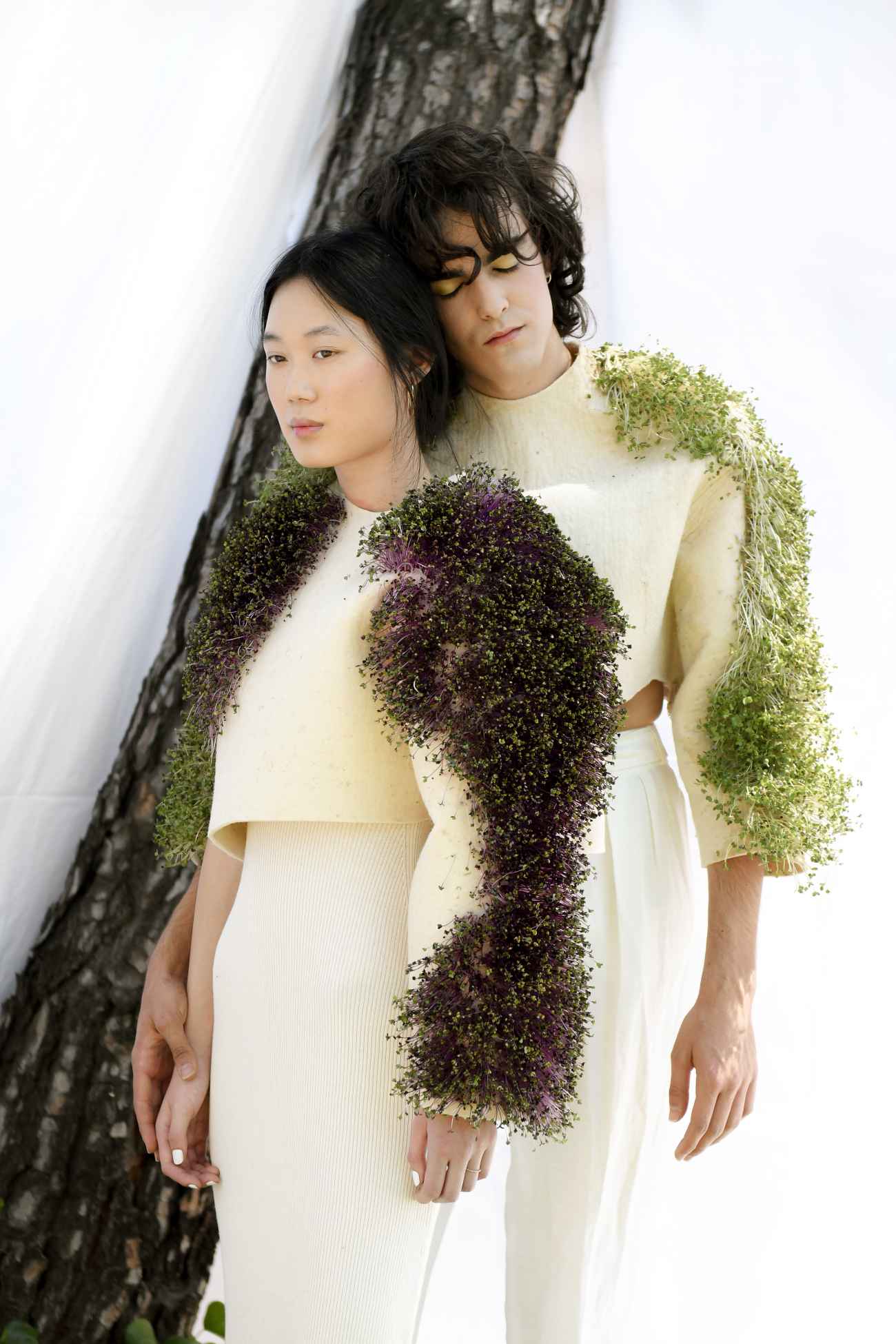
What does nature mean to you?
This is a beautiful question that I think we all should ask ourselves. In my case, nature means wisdom, order, harmony. The more I investigate and study how it works, the more I am surprised by the great example that nature sets for human beings.
An example of this is the natural process of symbiosis, a scientific term referring to the persistence and parallel relation between organisms of different species. There are plants that help each other grow stronger; species can coexist in harmony and peace. In the animal world, different species function hierarchically and that ensures species’ survival.
“If I had to define nature with a single
word, I would say that nature, above
all, means ‘wisdom’.”

This project reflects, in a poetic way, current concerns about our position as humans in relation to our environment. How do you feel these anxieties are being expressed by rising artists, and handled by young generations?
I can say that we are finally entering a stage in which sustainability, research and reconnection to the planet is no longer a value, but an imperative call for action. The more I advance in my research, the more the projects and artists whose fight and aims are the same I come up with.
Obviously, we must continue working and researching to create a more controlled and responsible industry in all aspects, not only regarding the materials and resources that are being used, but also in relation to the well-being of those who produce it.
If there’s one thing I’ve learned, it is how connected sustainability and innovation are. As I always say, sustainable fashion has little to do with coming back to the fabrics and materials of the past. On the contrary, it must be the result of an in-depth analysis: rescuing the value of good garments from the past while working them with current technology. This is how we can create a fashion industry that is both environmentally and socially sustainable. We can no longer postpone this goal.
Undoubtedly, there are more consumers aware of the urgency to reshape the fashion industry, and I know that they will gladly start supporting innovative offers made by new artists and young people. This will be the job and the challenge of the future designers: to be the visionaries and the architects of this great change.
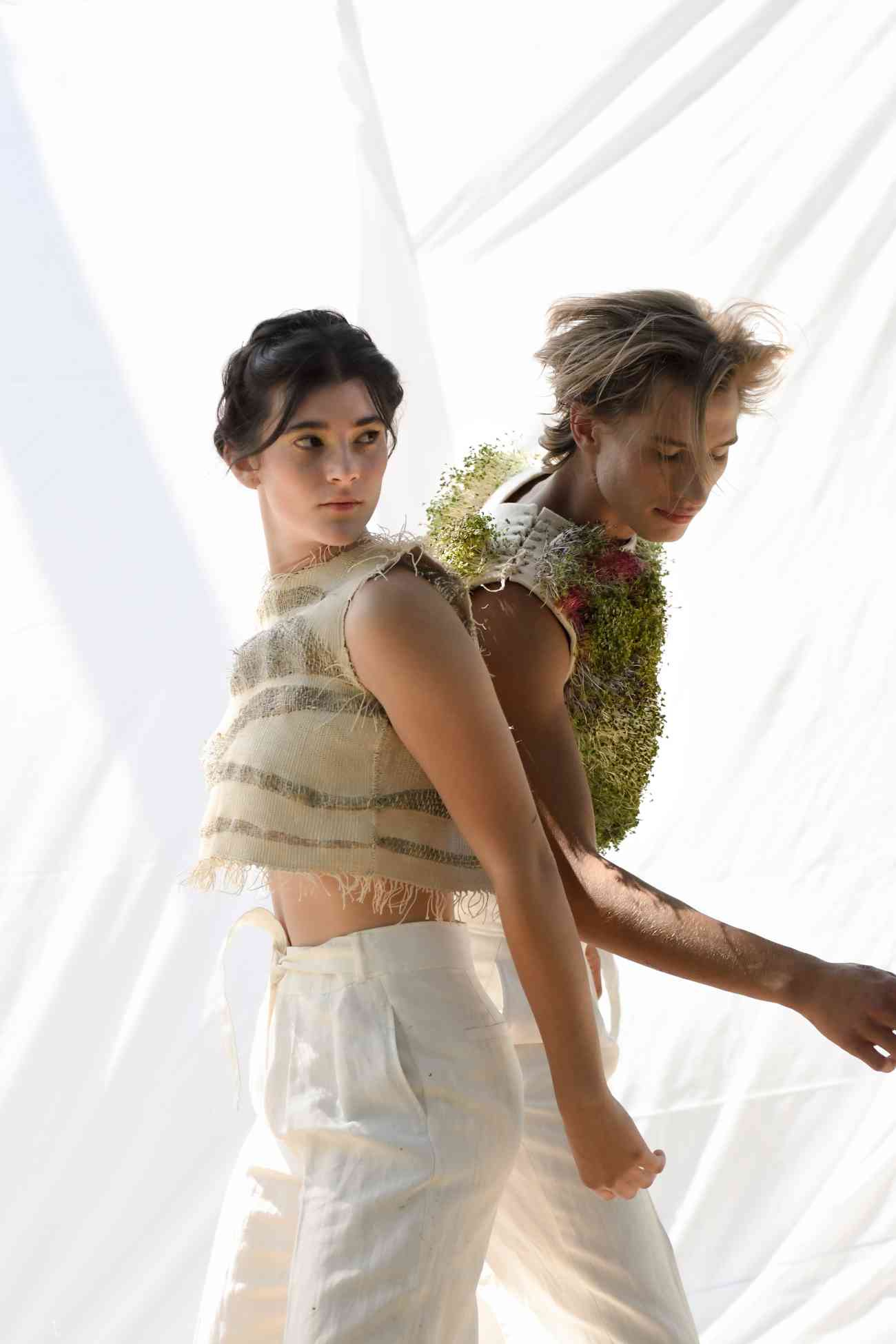
You will be soon graduating from the IED University in Madrid – at the time of a world pandemic. How would you like to succeed in your career? What are your hopes for the near future?
I virtually graduated a couple of days ago, so I can finally celebrate that I have completed my degree in fashion design and communication.
Without a doubt, the work situation is difficult right now and it will be a challenge for everyone. My dream has always been to continue researching and working within the textile industry to find solutions to many of the things that do not work today in the fashion world. The branch of biotechnology applied to textiles is the one that interests me the most since I am a very curious person. However, with everything that is happening, we only have the option to improvise and flow with the situation so I’m also excited and open to work in other departments or sectors. The only thing I have very clear is that I would like my work to be closely linked to sustainability.
CREDITS
Designer: Paula Ulargui
Photographer: Blanca Mazariegos
Models: Maria Garcia; Marcos Escobar; Edith Martinez-Val; Tim Lutter; Laura Leyva
Mua: Camila Silveira
Video: Jimena Martin








